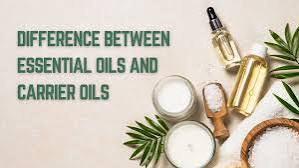Essential oils and carrier oils are both widely used in aromatherapy, skincare, and natural wellness. While they often work together, they serve different purposes and have distinct properties. Understanding their differences can help you use them safely and effectively.
What Are Essential Oils?
Essential oils are highly concentrated plant extracts obtained through steam distillation or cold pressing. They capture the plant’s aromatic compounds, giving them their strong fragrance and therapeutic benefits. Popular examples include lavender oil, peppermint oil, and tea tree oil. These oils can promote relaxation, improve mood, and support skin health. However, due to their potency, they should never be applied directly to the skin without dilution.
What Are Carrier Oils?
Carrier oils, also known as base oils, are mild, fatty oils extracted from seeds, nuts, or kernels. They are typically obtained through cold pressing and have a neutral or light scent. Examples include coconut oil, sweet almond oil, jojoba oil, and olive oil. Carrier oils are rich in vitamins and fatty acids, making them excellent for moisturizing and nourishing the skin. Their primary role is to dilute essential oils, making them safe for topical application.
The Key Difference
The main difference lies in their concentration and purpose. Essential oils are volatile, aromatic, and therapeutic but require dilution before skin contact. Carrier oils, on the other hand, are gentle, moisturizing, and serve as the medium that “carries” essential oils into the skin.
Why They Work Best Together
Combining essential oils with carrier oils allows you to enjoy the benefits of both. The essential oil provides therapeutic effects, while the carrier oil nourishes the skin and ensures safe application.
By knowing the difference between both oils, you can maximize their benefits while protecting your skin from irritation, creating a safe and effective natural care routine.

